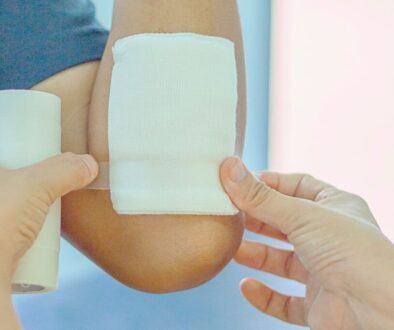Amniotic Patch: Everything You Need To Know

In What Situations Is An Amniotic Patch Utilized?
Amniotic membranes are often used in primary care. They treat trauma or injuries like corneal abrasions.
The amniotic membrane has three layers: the epithelium, basement membrane, and stroma. Each layer plays a crucial role in eye healing. The basement membrane is rich in collagen. It mirrors the structure of the cornea and conjunctiva, promoting cellular growth. Meanwhile, the stroma contains hyaluronic acid and cytokines, which help reduce inflammation.
A study suggests cryopreserved amniotic membranes could benefit eye surface health. They may alleviate symptoms in those with moderate to severe dry eye disease.
Amniotic membranes can also aid in treating various eye conditions, including:
- Corneal ulcers and perforations
- Chemical injuries
- Post-glaucoma surgery care
- Bullous keratopathy (blister-like swelling of the cornea)
- Neurotrophic keratitis (a degenerative corneal condition)
- Pterygium (a raised, wedge-shaped growth on the eye)
What Happens During The Procedure?
Applying an amniotic membrane patch graft is a simple procedure in a doctor’s office or clinic setting. The membrane is placed on the eye’s surface using a flexible ring. The doctor positions it under the upper and lower eyelids, covering the cornea. Specialized glue or absorbable or nonabsorbable sutures secure the membrane.
A bandage contact lens may be applied over the membrane to ensure stability. After the transplant, the eye may need to be kept closed with gauze or surgical tape for a few days. This allows the eye to absorb the membrane and start healing. The doctor will remove the securing ring once the eye has fully absorbed the membrane.
Possible Complications
Although complications are uncommon, they can arise. Possible issues with an amniotic patch for eye include membrane loss if not appropriately secured, keratitis from contamination, and infections. The risk of infection is minimal. The tissue is treated with antibiotics and undergoes thorough screening before use.
Frequently Asked Questions
What is the cost of an amniotic membrane?
The price of amniotic membranes typically ranges between $200 and $600, depending on the quantity purchased at once.
What is the recovery time for an amniotic membrane graft?
Recovery time generally ranges from 2 to 15 days, depending on the specific eye condition being treated. The amniotic membrane promotes swift wound healing, often allowing faster recovery than many other treatments.
Can an amniotic membrane patch aid in treating dry eye?
Amniotic eye patches are effective for dry eye treatment. They have anti-inflammatory and antimicrobial properties.

Transforming Eye Care With Amniotic Patches
An amniotic patch offers a promising solution for dry eyes. They also help with other ocular conditions or injuries. These patches have minimal side effects. Their healing properties and capability to lessen inflammation make them an invaluable asset in eye care. Explore the benefits and enhance your eye health today!
Heal Ulcers, Burns, & Surgery Wounds With Break-Through Amniotic Allograft Treatments
Experience the future of wound care with our advanced amniotic allograft treatments. Say goodbye to slow healing. Our innovative solutions promote faster recovery from pressure wounds, ulcers, burns, and surgical wounds. Trust the power of science for your healing journey. Regain your comfort and health today! See if you are eligible for treatment here.

About The Author
Corinne Grace is a full-time writer living in the Philippines. She has a nursing degree from Riverside College. Her background in nursing informs her perspective, allowing her to weave in themes of health, empathy, and resilience into her work.




